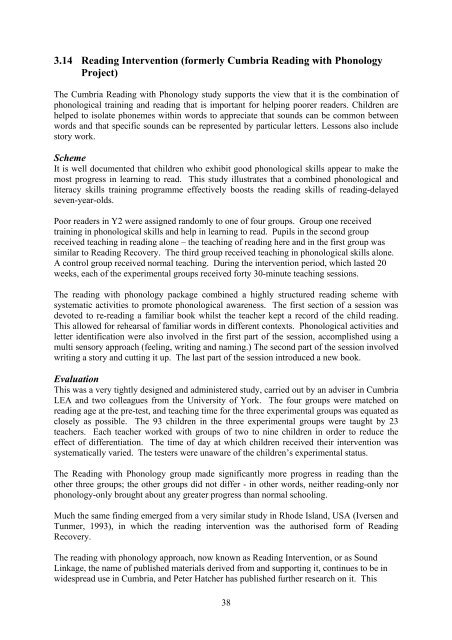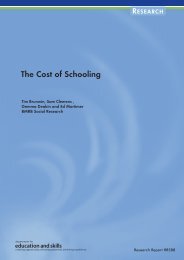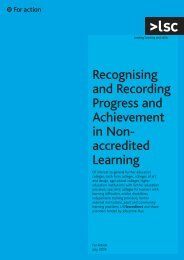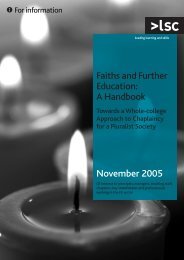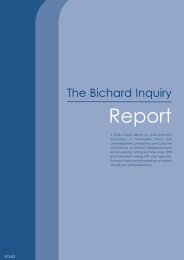What Works for Children with Literacy Difficulties? - Digital ...
What Works for Children with Literacy Difficulties? - Digital ...
What Works for Children with Literacy Difficulties? - Digital ...
You also want an ePaper? Increase the reach of your titles
YUMPU automatically turns print PDFs into web optimized ePapers that Google loves.
3.14 Reading Intervention (<strong>for</strong>merly Cumbria Reading <strong>with</strong> Phonology<br />
Project)<br />
The Cumbria Reading <strong>with</strong> Phonology study supports the view that it is the combination of<br />
phonological training and reading that is important <strong>for</strong> helping poorer readers. <strong>Children</strong> are<br />
helped to isolate phonemes <strong>with</strong>in words to appreciate that sounds can be common between<br />
words and that specific sounds can be represented by particular letters. Lessons also include<br />
story work.<br />
Scheme<br />
It is well documented that children who exhibit good phonological skills appear to make the<br />
most progress in learning to read. This study illustrates that a combined phonological and<br />
literacy skills training programme effectively boosts the reading skills of reading-delayed<br />
seven-year-olds.<br />
Poor readers in Y2 were assigned randomly to one of four groups. Group one received<br />
training in phonological skills and help in learning to read. Pupils in the second group<br />
received teaching in reading alone – the teaching of reading here and in the first group was<br />
similar to Reading Recovery. The third group received teaching in phonological skills alone.<br />
A control group received normal teaching. During the intervention period, which lasted 20<br />
weeks, each of the experimental groups received <strong>for</strong>ty 30-minute teaching sessions.<br />
The reading <strong>with</strong> phonology package combined a highly structured reading scheme <strong>with</strong><br />
systematic activities to promote phonological awareness. The first section of a session was<br />
devoted to re-reading a familiar book whilst the teacher kept a record of the child reading.<br />
This allowed <strong>for</strong> rehearsal of familiar words in different contexts. Phonological activities and<br />
letter identification were also involved in the first part of the session, accomplished using a<br />
multi sensory approach (feeling, writing and naming.) The second part of the session involved<br />
writing a story and cutting it up. The last part of the session introduced a new book.<br />
Evaluation<br />
This was a very tightly designed and administered study, carried out by an adviser in Cumbria<br />
LEA and two colleagues from the University of York. The four groups were matched on<br />
reading age at the pre-test, and teaching time <strong>for</strong> the three experimental groups was equated as<br />
closely as possible. The 93 children in the three experimental groups were taught by 23<br />
teachers. Each teacher worked <strong>with</strong> groups of two to nine children in order to reduce the<br />
effect of differentiation. The time of day at which children received their intervention was<br />
systematically varied. The testers were unaware of the children’s experimental status.<br />
The Reading <strong>with</strong> Phonology group made significantly more progress in reading than the<br />
other three groups; the other groups did not differ - in other words, neither reading-only nor<br />
phonology-only brought about any greater progress than normal schooling.<br />
Much the same finding emerged from a very similar study in Rhode Island, USA (Iversen and<br />
Tunmer, 1993), in which the reading intervention was the authorised <strong>for</strong>m of Reading<br />
Recovery.<br />
The reading <strong>with</strong> phonology approach, now known as Reading Intervention, or as Sound<br />
Linkage, the name of published materials derived from and supporting it, continues to be in<br />
widespread use in Cumbria, and Peter Hatcher has published further research on it. This<br />
38


